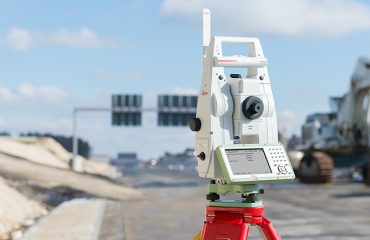Join Leica Geosystems’ Burke Asay, Russell Snell and Richard Ostridge as they explore the TS20—a ground-up redesign that adds on-board AI, fast (and quiet) motors, IP66 ruggedness, Linux-based performance, and some surprisingly thoughtful touches.
The new Leica TS20 isn’t a spec bump. It’s a clean-sheet rebuild: new EDM, ATR, communications, telescope, software, and operating system. That foundation unlocks speed, reliability, and features that are tough to appreciate on a spec sheet.
Richard Ostridge, Burke Asay, and Russell Snell of Leica Geosystems, part of Hexagon, recently got together for an unveiling of the new AI-powered total station. This video captures their insights and focuses on real, practical moments, including lock behavior through interference, autofocus in the field, and how the instrument “thinks” about targets.
8 Standout TS20 Capabilities Covered in the Video
1) On-board AI with an NPU (Neural Processing Unit)
AI runs locally on the instrument—no cloud needed—so it works offline and respects data privacy. You’ll see “AI-Detect” auto-identify prism types to prevent costly constant errors, and hear how AI now informs ATR, PowerSearch, and Dynamic Lock in tough conditions (misty rain included).
2) Much faster—and remarkably quiet—motors
The TS20 rotates fast enough to feel instant, but you’ll barely hear it. That speed and silence translate directly into tighter tracking and quicker relocks.
3) A serious PowerSearch boost (now finds reflective tape)
Two-beam scanning halves the search space, speeding up target acquisition. PowerSearch now also picks up “sticky” reflective targets, making resections and control work simpler.
4) IP66 ruggedness
Yes, they literally hose it down. The TS20 is the first Leica robotic total station with IP66, designed for challenging sites.
5) New controls where your hands already are
Program hotkeys directly on the tangent screws (distance, measure, or your choice). Plus a focus button with one-press autofocus and a continuous autofocus mode to reduce eye strain over long days.
6) Modern connectivity, inside and out
LEMO connectors with Ethernet, dual eSIM communications (one for your data, one for persistent IoT), and GeoCloud Protect for movement alerts, remote lock, and recovery workflows.
7) Linux under Captivate
Captivate (v10) on a Linux OS brings faster startup, a snappy multi-touch UI, and buttery 3D navigation. It feels like a modern device because it is one.
8) USB-C for straight-up drag-and-drop
Move jobs like you’d expect — plug in and go. No extra software hoops.
AP20 Synergy You Can Feel
Pair the TS20 with the AP20, and you’ll see near-instant tilt initialization and a lock that keeps up when you start walking. Higher EDM frequency, tighter lock, and faster motors stack together, so routine tasks feel smoother and more “invisible.” The team shares how natural movement is enough to re-initialize with no extra steps required.
Coming Soon: Tracking Through Obstructions
One feature teased in the video: AI-Follow, which is the ability for the TS20 to infer your path even when line-of-sight temporarily breaks (people, vehicles, site clutter). When you reappear, it knows where to find you and relocks. It’s not in the initial release, but it’s on the near-term roadmap.
Smaller, Sleeker, More Thoughtful
You’ll also notice the integrated radio antenna (no radio handle), a slimmer form factor, battery LEDs for quick checks, and a keyboard/screen layout that simply makes daily use easier.
Who Should Watch
- Construction and layout crews who struggle with line-of-sight issues and seek faster relocks.
- Survey teams that require robust tracking in adverse weather conditions and complex target environments.
- Fleet managers evaluating ruggedness (IP66), connectivity, and theft protection.
- Current TS16 users curious about compatibility and real-world productivity gains.
Ready to See It for Yourself?
Hit play on the video above to discover the capabilities of the TS20. If you’re spec-shopping, this is the kind of in-depth look that numbers alone can’t give you.





